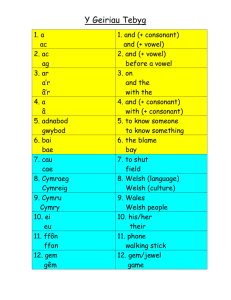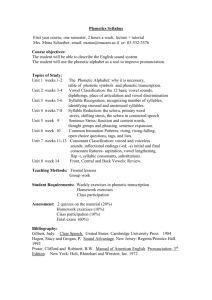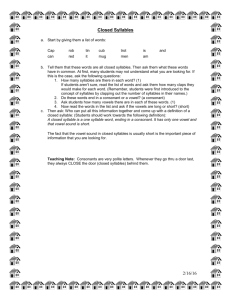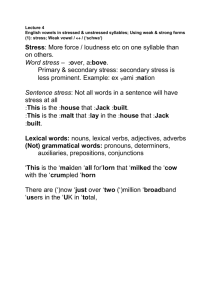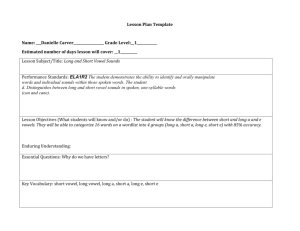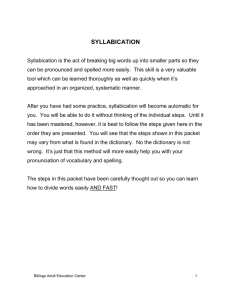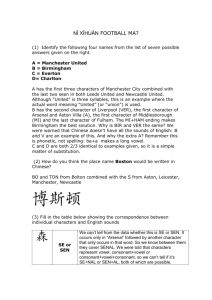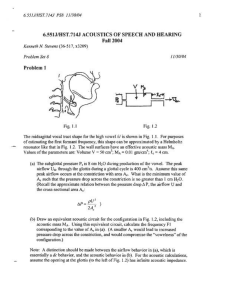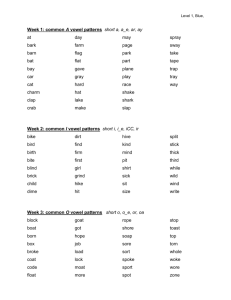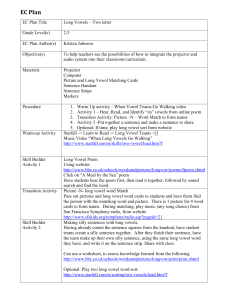PHONETIC RESPELLING
advertisement
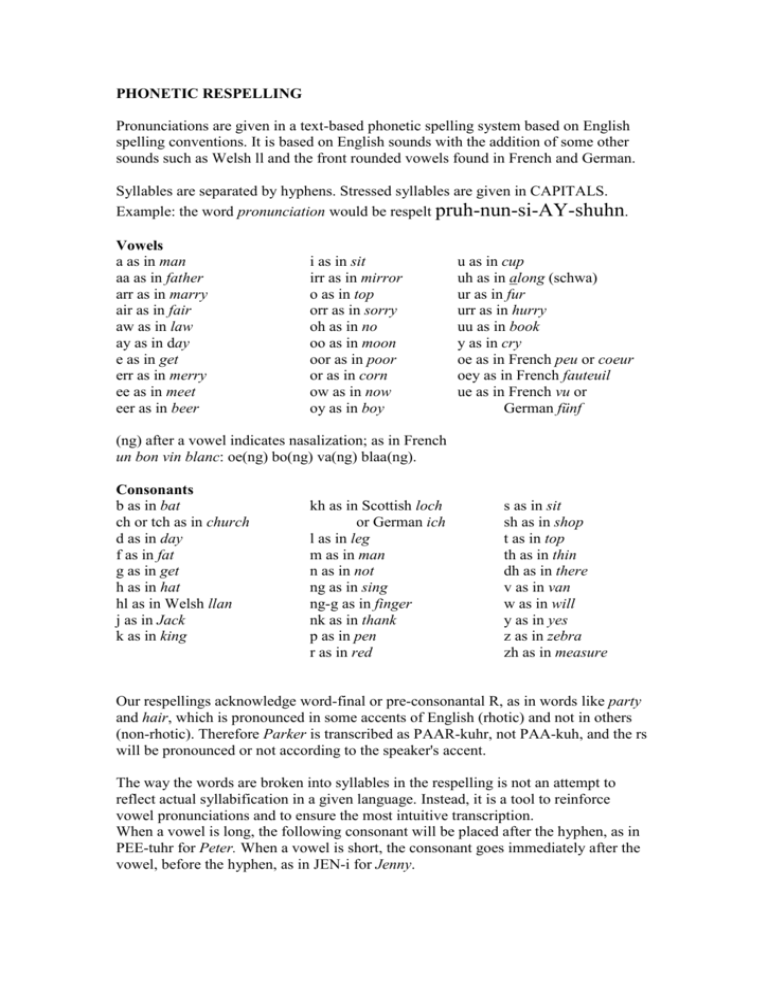
PHONETIC RESPELLING Pronunciations are given in a text-based phonetic spelling system based on English spelling conventions. It is based on English sounds with the addition of some other sounds such as Welsh ll and the front rounded vowels found in French and German. Syllables are separated by hyphens. Stressed syllables are given in CAPITALS. Example: the word pronunciation would be respelt pruh-nun-si-AY-shuhn. Vowels a as in man aa as in father arr as in marry air as in fair aw as in law ay as in day e as in get err as in merry ee as in meet eer as in beer i as in sit irr as in mirror o as in top orr as in sorry oh as in no oo as in moon oor as in poor or as in corn ow as in now oy as in boy u as in cup uh as in along (schwa) ur as in fur urr as in hurry uu as in book y as in cry oe as in French peu or coeur oey as in French fauteuil ue as in French vu or German fünf (ng) after a vowel indicates nasalization; as in French un bon vin blanc: oe(ng) bo(ng) va(ng) blaa(ng). Consonants b as in bat ch or tch as in church d as in day f as in fat g as in get h as in hat hl as in Welsh llan j as in Jack k as in king kh as in Scottish loch or German ich l as in leg m as in man n as in not ng as in sing ng-g as in finger nk as in thank p as in pen r as in red s as in sit sh as in shop t as in top th as in thin dh as in there v as in van w as in will y as in yes z as in zebra zh as in measure Our respellings acknowledge word-final or pre-consonantal R, as in words like party and hair, which is pronounced in some accents of English (rhotic) and not in others (non-rhotic). Therefore Parker is transcribed as PAAR-kuhr, not PAA-kuh, and the rs will be pronounced or not according to the speaker's accent. The way the words are broken into syllables in the respelling is not an attempt to reflect actual syllabification in a given language. Instead, it is a tool to reinforce vowel pronunciations and to ensure the most intuitive transcription. When a vowel is long, the following consonant will be placed after the hyphen, as in PEE-tuhr for Peter. When a vowel is short, the consonant goes immediately after the vowel, before the hyphen, as in JEN-i for Jenny.

